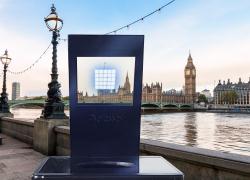High luminance, small format-capable microLED tech from Plessey expected to enable AR and VR Head-Up Displays

Plessey Semiconductors, a developer of optoelectronic technology solutions, has successfully demonstrated how its monolithic microLED technology can be used to deliver the next-generation of Head-Up Displays (HUDs), enabling new augmented and virtual reality (AR and VR) applications.
MicroLEDs are emerging as the only technology that can provide high luminance in a small format. Makers of wearable technologies are currently pursuing manufacturers that can deliver an ideal microLED solution. With this demonstrator, Plessey has confirmed it is ready to enable its partners to move into production of a monolithic display based on microLEDs using the company’s proprietary GaN-on-Silicon approach.
Speaking at CES 2018, Dr Keith Strickland, CTO at Plessey said: “Monolithic microLED technology is the only viable solution that can enable products that are not only compact enough to be worn without restricting the overall experience for AR and VR applications and in HUDs, but also provide the size, weight, power and luminance needed.”
The demonstrator, which has been produced in collaboration with Artemis Optical, combines Plessey’s monolithic display, based on an array of microLEDs integrated alongside an active matrix backplane, with the patented film technology and a single lens arrangement from Artemis.
The combination of technologies removes ambient light in the wavelength matching the microLED display output, resulting in a HUD that delivers very high display brightness with low power consumption, in a format that is considerably smaller than existing HUD designs, yet still offers significant cost savings.
During CES 2018, Plessey Semiconductor and Artemis Optical presented the demonstrator to many companies developing VR and AR electronics. Headsets and eyewear outfitted for AR and VR applications are set for record sales this year of US$1.2 billion (€0.98 billion) in the US market alone, according to the Consumer Technology Association (CTA).
Comment on this article below or via Twitter @IoTGN
